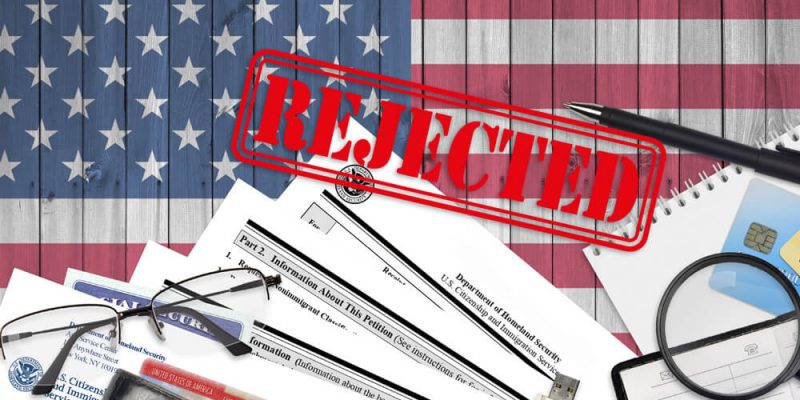The EB-5 Immigrant Investor Program is one of the fastest and easiest ways for foreign nationals to immigrate to the United States. The program has helps thousands of immigrants receive U.S. green cards and achieve a brighter, safer future in the United States. While the majority of EB-5 investors complete the process and obtain permanent resident status, there are some EB-5 applicants each year whose petitions are rejected. To avoid falling into this group, investors should conduct thorough research on the program to ensure they have satisfied the necessary requirements, as well as meticulous due diligence into any prospective EB-5 project to ensure the project developer and EB-5 regional center is trustworthy and reliable. There are many different reasons that an EB-5 petition could be denied, and below are some of the most common.
Not investing enough capital
To be eligible for an EB-5 visa, an investor must meet the minimum investment requirement. The minimum investment amount is $1.8 million, but if the project is in a targeted employment area (TEA), the minimum EB-5 investment amount is halved to $900,000. Investors must prove on their I-526 petition that they have invested the minimum amount required.
Investing in a project that does not qualify for the EB-5 program
Investors also need to conduct proper research on the new commercial enterprise (NCE) that they choose to make an EB5 investment in. It is important that the chosen project meets the necessary requirements to qualify as an EB-5 project. If an investor chooses to invest through a EB-5 regional center, they should make sure the regional center is reputable so that they do not put their investment and potential future at risk.
Presenting false information on an EB-5 application
Every EB-5 investor must provide supporting evidence with their EB-5 application to prove that they have met each of the EB-5 program’s requirements. If an investor presents false information in an attempt to distort the facts, not only will their petition be denied, but they could also be permanently banned from entering the United States and receiving a U.S. green card.
Providing inconsistent information
To begin the EB-5 journey, EB-5 investors must fill out an I-526 petition, and when they receive approval, they may apply for their U.S. conditional permanent resident status. Later in the process, they must complete an I-829 petition to remove the conditions from their permanent resident status. Applicants must submit accompanying documentation that proves they have satisfied the requirements for each petition. It is extremely important that all information provided is accurate and consistent. EB-5 investors should discuss their petition with an experienced immigration attorney and make sure they are providing the most accurate information possible. Inconsistent or inaccurate information could result in a request for evidence (RFE), or in the worst case, a denial. Double-checking all information before submitting it can help avoid delays in the process, as well as a potential denial.
Children aging out or getting married
One of the many benefits of the EB-5 program is that investors can include their spouse and children on their EB-5 application, making them eligible for U.S. green cards as well. Unfortunately, United States Citizenship and Immigration Services (USCIS) has a strict definition of who qualifies as a “child.” For a child to be eligible, they must be unmarried and younger than 21. Unfortunately, the long wait times of the EB-5 process can make matters a little more complicated.
The good news is that children are protected from “aging out” during the I-526 adjudication process. As long as a child is younger than 21 when the I-526 petition is submitted, they can still be eligible for a U.S. green card even if they turn 21 before the petition is approved. Unfortunately, children are not offered this same protection in other parts of the process. If a child ages out while waiting for a visa interview, they will most likely not be granted a U.S. green card.
In the same way that long delays could lead to children aging out, delays also increase the chance of a child getting married, rendering them ineligible for an EB-5 visa. If a child is deemed ineligible, the rest of the family may still be approved, but the child will be denied U.S. permanent resident status.
Other reasons for denials
This list contains only a small number of the reasons EB-5 applicants may be denied. Many other factors, including criminal history, security concerns, and health-related reasons, could also lead to the denial of one’s EB-5 application. Prospective investors should visit the U.S. Department of State – Bureau of Consular Affairs website to gain a better understanding of what could lead to a denied petition.
What options do you have if your EB-5 petition is denied?
Although having your petition denied is a major setback, you may still be able to salvage your future in the United States even after an EB-5 denial. When an application is denied, USCIS must give a clear reason for the denial, which helps the investor understand why they were denied and determine which options are available to them moving forward. Denied EB-5 investors should review their options with an immigration attorney to determine their best course of action, which could include filing an appeal or pursuing a new route of immigration.







